Pu-erh Tea Extract
Pu Erh tea extract, derived from the leaves of the Camellia sinensis plant, is a concentrated form of Pu Erh tea, a traditional Chinese fermented beverage. Fermentation and aging are key to its unique profile, which differs markedly from other teas.
Key Components:
- Catechins: Antioxidant compounds prevalent in fresh tea leaves that transform into theaflavins and thearubigins during fermentation.
- Microorganisms: Essential in the fermentation process, they lead to the production of statins and small amounts of lovastatin, which are not found in other teas.
Processing:
Bestsellers
- Harvesting of leaves.
- Sun-Drying: To halt oxidation and retain enzymes vital for fermentation.
- Piling: For microbial fermentation, leaves are heaped in a controlled environment.
- Compression: Transforms loose leaves into cakes or bricks.
- Aging: Enhances flavor and properties; can last for several months to many years.
By consuming the extract, you ingest a concentrated version of the tea's properties, including potential health benefits such as:
- Aiding digestion
- Promoting weight loss
- Supporting cardiovascular health
When choosing an extract, consider the source, age, and purity of the original tea leaves, as these factors influence the extract’s quality and potency. Brewing methods for the extract might differ from traditional teas, so follow specific instructions for the best experience.
Origin and History
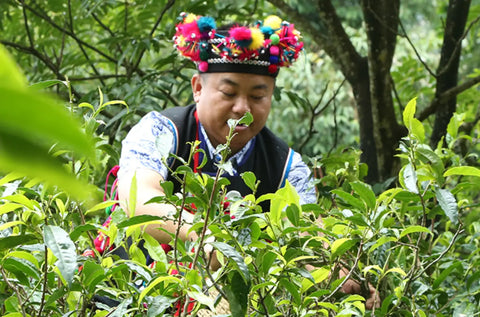
Pu-erh tea extract originates from the pu-erh tea leaves, which have been cultivated and appreciated for their depth of flavor and potential health benefits for centuries. Your understanding of the extract begins with the regions where these leaves grow and the historical context that elevated pu-erh tea to its celebrated status.
Cultivation Regions
-
Yunnan Province, China: The birthplace of pu-erh tea. This area provides the perfect environmental conditions for tea cultivation, including high altitude, rich biodiversity, and a temperate climate.
- Key Area: Xishuangbanna — known for its ancient tea trees.
- Other Notable Prefectures: Pu'er and Lincang — these regions also contribute significantly to pu-erh tea production.
Historical Significance
- Tang Dynasty (618-907 AD): Recognition of pu-erh tea began, with its use and transport along the ancient trade route known as the Tea Horse Road.
-
Ming (1368-1644) and Qing (1644-1912) Dynasties: The tea's popularity surged, becoming an imperial tribute tea, evidencing its importance in Chinese culture and society.
- Quality and Authenticity: The demand for authentication practices arose as the tea became highly desired, leading to unique wrapping and stamping techniques to guarantee purity and origin.
Processing Methods

Pu-erh tea extract is produced through specific processing methods that ensure its unique flavor and potential health benefits. Understanding the details of the fermentation process and subsequent extraction techniques is essential for appreciating the complexities of this product.
Fermentation Process
Pu-erh tea undergoes a distinctive fermentation process, which can be separated into two types: natural and accelerated. Natural fermentation occurs over time by storing raw pu-erh tea in the right conditions, allowing it to develop a rich flavor profile naturally. Accelerated fermentation, on the other hand, is achieved in a controlled environment where factors such as humidity and temperature are carefully managed to expedite the fermentation.
-
Natural Fermentation:
- Length: Several months to years
- Conditions: Cool, dry, and aired spaces
-
Accelerated Fermentation:
- Length: Weeks to months
- Method: Warm, humid warehouses called "wet-piling" areas
Extraction Techniques
Once fermentation is complete, the pu-erh tea is ready for extraction. There are multiple techniques to extract the desirable compounds from the tea leaves:
1. Hot Water Extraction: Involves steeping the fermented tea leaves in hot water, then concentrating the solution under reduced pressure to preserve the tea's compounds.2. Solvent Extraction: Uses solvents like ethanol or methanol to extract specific components, followed by evaporation to remove the solvent, leaving behind the pu-erh tea extract.
-
Temperature and Time:
- Hot Water: Typically around 90°C for 1-2 hours
- Solvent: Varies based on the solvent used
-
Filtration and Purification:
Lao Ban Zhang
- After extraction, the solution is filtered to remove solid particles.
- A secondary stage may include purification techniques such as chromatography or crystallization to isolate certain substances.
Health Benefits

Pu-erh tea extract offers several health benefits backed by scientific research.
Antioxidant Content
Pu-erh tea extract is rich in antioxidants, particularly catechins and theabrownins. These compounds help protect your cells from oxidative stress, which can lead to chronic diseases. Studies show that the unique fermentation process increases the level of these beneficial antioxidants.
Digestive Support
Your digestive health may benefit from pu-erh tea extract due to the presence of microorganisms that develop during fermentation. These can act similarly to probiotics, aiding in digestion and the maintenance of a healthy gut flora.
Weight Management
Integrating pu-erh tea extract into your diet may assist in weight management. Clinical studies indicate that the tea can help increase metabolism and fat burning, potentially making it a valuable addition to weight loss strategies. However, it should complement regular exercise and a balanced diet.
Chemical Composition
Pu-erh tea extract is characterized by a rich chemical composition that significantly impacts its health benefits and flavor. This section details two key components: the polyphenols profile and caffeine levels.
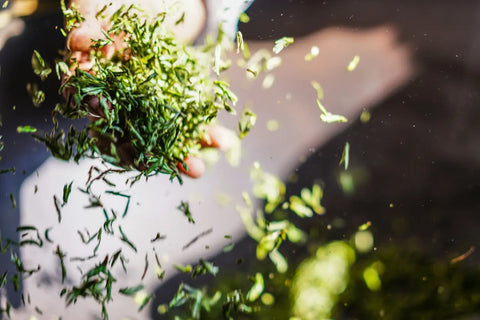
Polyphenols Profile
Pu-erh tea extract contains a variety of polyphenols, which are active compounds known for their antioxidant properties. The most prevalent in the extract are:
- Catechins: Including epicatechin, epigallocatechin, epicatechin gallate, and epigallocatechin gallate.
- Theaflavins: Contribute to the tea's reddish color and are formed during the fermentation process.
- Thearubigins: Highly oxidized polyphenols that emerge during fermentation and affect the flavor and color.
- Flavonoids: Such as quercetin and kaempferol, which have potential health benefits.
Caffeine Levels
The caffeine content in pu-erh tea extract can vary, but it is typically within the following range:
| Brew Time | Caffeine Content (approx.) |
|---|---|
| 1 minute | 30-55 mg per 8 oz serving |
| 3 minutes | 45-70 mg per 8 oz serving |
Caffeine levels increase with prolonged brewing times. It's worth noting that pu-erh tea generally contains less caffeine than black tea but more than green tea.
Usage and Dosage Recommendations
Pu-erh tea extract is a concentrated form of the traditional Chinese fermented tea and offers various benefits. As with any supplement, following proper dosage guidelines is crucial for efficacy and safety.
Suggested Dosage:
- Standard Serving: Typically, 1-2 capsules (or about 1 gram of extract powder), once or twice daily.
- Brewing Liquid Extract: Use approximately 0.5-1 milliliter if the extract is in liquid form, adding it to hot water.
It is essential to consult the product's label or a healthcare provider for the most accurate dosage instructions, as concentrations and formulations can vary.
How to Use:
1. In Capsule Form:
- Take with water.
- Best if consumed with or after a meal.
- Mix with hot water to make tea.
- Optionally, add lemon or honey to taste.
3. Powder Form:
- Mix into smoothies or shakes.
- Incorporate into food recipes as desired.
Precautions:
- Start with a lower dose to assess tolerance.
- Do not exceed recommended dosage without medical advice.
- Pregnant or nursing women, those with medical conditions, or those on medications should consult a doctor before use.
Cycling Use:
It may be beneficial to cycle your use of Pu-erh tea extract, such as two weeks on followed by one week off, to prevent potential tolerance build-up. Track your response to the extract and adjust usage as needed.
Preparation and Consumption
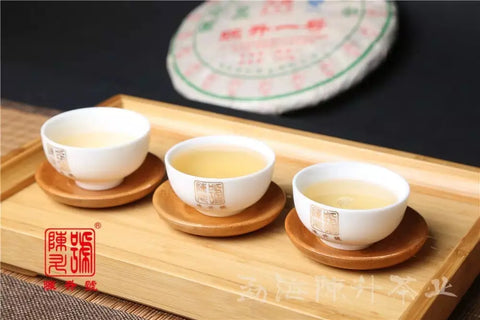
When preparing Pu-erh tea extract, understanding the appropriate brewing techniques and contemporary applications is crucial for optimal enjoyment and usage.
Traditional Brewing
To brew Pu-erh tea traditionally, begin by selecting a high-quality Pu-erh tea cake or loose leaves. Follow these steps:
1. Rinse the Leaves: Gently rinse the Pu-erh leaves with hot water to remove any dust and awaken the leaves. Discard this water.
2. Steep the Tea: Steep the leaves in hot water (around 95°C or 203°F) for a short time, usually 20 seconds to 2 minutes, depending on how strong you like your tea. Pu-erh tea allows for multiple infusions; the flavor can change with each steeping.
Ensure you use the correct water-to-tea ratio, generally about 1 gram of tea per 15-20ml of water.
Modern Uses
Pu-erh tea extract finds its place in various modern applications:
-
Cooking Ingredient: Add Pu-erh tea extract to broths, soups, or sauces for a unique flavor.
-
Health Supplements: Pu-erh extract is available in capsule form for those seeking its health benefits, from aiding digestion to potentially reducing cholesterol. Always follow the manufacturer's dosage instructions.
Product Varieties
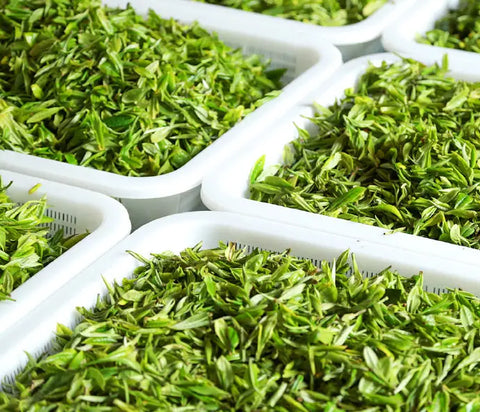
When exploring pu-erh tea extract, you'll come across two primary forms: tea cakes and loose leaf. Each type offers a unique experience with distinct storage and aging properties.
Tea Cakes
Traditionally, pu-erh tea is compressed into tea cakes or bingcha, which are round and dense. These cakes range in weight, but a standard size is 357 grams.
- Aging Potential: Tea cakes can age well, developing richer flavors over time.
- Storage Tips: Store in a cool, dry place, away from strong odors.
Loose Leaf
Alternatively, loose leaf pu-erh tea offers convenience and a quicker brewing time compared to tea cakes.
- Variety: You'll find loose leaf pu-erh in a range of grades and ages.
- Preparation: Simply measure the desired amount, steep, and enjoy.
Market Trends and Economic Impact
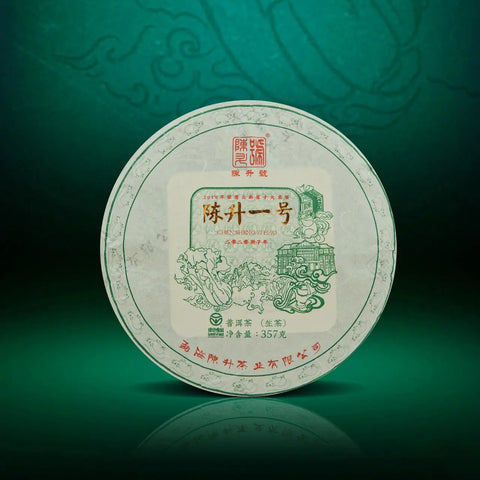
The global market for Pu-erh tea extract is experiencing a significant growth trend. This is evident in the rise of demand for traditional Chinese tea in Western countries. To understand your position in the market, consider key influencers such as health trends and consumer awareness of Pu-erh tea’s unique benefits.
- Health-conscious consumers: As you focus on health and wellness, Pu-erh tea extract is becoming more sought-after due to its reported benefits, including aiding digestion and weight management.
- Premium product appeal: Your willingness to invest in high-quality, authentic Pu-erh teas supports the market's upscale trajectory.
Economically, the extract’s market is diversifying. Specialty online retailers are expanding your accessibility to Pu-erh tea extract, influencing its economic footprint.
- Export growth: With China being the major producer, the export volume to North America and Europe is on the rise, affecting trade balances positively.
- Price stability: Despite your demands, prices remain stable thanks to advancements in production and supply chain management.
Your awareness and interest in Pu-erh tea extract are key drivers in market dynamics. As an informed consumer, your choices have direct implications for economic patterns related to this niche market.
Storage and Preservation
When storing Pu-erh tea extract, maintaining the quality over time is essential. Store your extract in a cool, dry place away from direct sunlight. Humidity can negatively affect the extract, so areas with low humidity are preferable.
Ideal Temperature:
- Room temperature (~20-25°C or 68-77°F)
The packaging should be airtight. Oxygen exposure can degrade the quality, so ensure the lid or seal is secured tightly after each use.
Proper Sealing:
- Check for any damage to the container
- If using a bag, remove excess air before sealing
- For jars, ensure the lid is screwed on tightly
Moisture Control:
- Consider using silica gel packets to absorb excess moisture.
Avoid contaminating the extract with foreign particles. Always use a clean, dry utensil to handle the extract.
Utensil Tips:
- Do not use a wet spoon
- Avoid using utensils that were in contact with strong odors or flavors
Periodically check the extract for signs of spoilage, such as mold, unusual odors, or discoloration. If any of these signs are evident, discard the extract to avoid health risks.
By following these guidelines, you'll ensure that your Pu-erh tea extract maintains its potency and flavor for as long as possible.
Quality Assessment Parameters
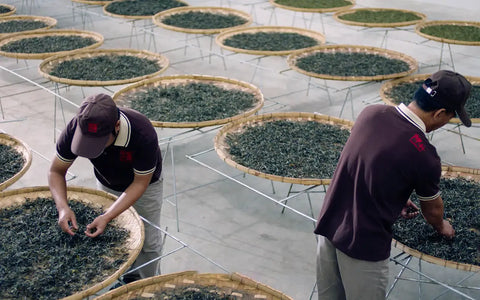
When assessing the quality of pu-erh tea extract, it’s important you consider several key parameters. The quality can significantly vary, and understanding these factors ensures you select a product that offers the benefits and flavor profile you're seeking.
Sensory Analysis:
- Color: Look for a rich, consistent hue.
- Aroma: Expect earthy, woody, and sometimes floral notes.
- Taste: It should have a mellow, smooth profile with possible hints of sweetness.
Chemical Analysis:
- Catechins: These antioxidants should be present, indicating potential health benefits.
- Caffeine Content: Know the caffeine level, as it affects both flavor and stimulation.
- Polyphenols: High levels typically correlate with better quality.
Physical Parameters:
- Solubility: Ensure the extract dissolves well, which is critical for preparation.
- Moisture Content: Too high moisture can indicate poor storage and risks mold growth.
| Parameter | Ideal Quality Indicator |
|---|---|
| Color | Deep amber to reddish-brown |
| Aroma | Earthy, without mustiness |
| Taste | Smooth with no astringency |
| Catechin Content | 30-40% of total polyphenols |
| Caffeine Content | 2-4% of dry weight |
| Solubility | Rapid dispersion in water |
| Moisture Content | Less than 5% |
By evaluating pu-erh tea extract based on these parameters, you can be more confident in the quality of your selection. Remember to consult with reputable sources or suppliers for certifications that may attest to the product’s purity and authenticity.
Safety and Side Effects
When consuming pu-erh tea extract, you generally consider it safe when taken in moderate amounts commonly found in food. However, if you plan to take it in supplemental form or in higher doses, it's essential to be aware of potential side effects and safety concerns.
-
Caffeine Content: Pu-erh tea contains caffeine. Excessive intake may lead to:
- Insomnia
- Nervousness
- Increased heart rate
- Upset stomach
- Interactions with Medication: If you're on any medications, particularly blood thinners or stimulants, consult your healthcare provider before adding pu-erh tea extract to your regimen.
| Condition | Recommendation |
|---|---|
| Pregnancy | Limit intake due to caffeine |
| Breastfeeding | Limit intake as caffeine passes into breast milk |
| Anxiety Disorders | Exercise caution due to caffeine's potential effects |
| Heart Conditions | Consult a doctor as caffeine may affect heart rhythm |
-
Allergies and Sensitivity: In rare cases, you might experience allergic reactions. Recognize symptoms such as hives, difficulty breathing, or swelling, and seek medical attention if they occur.
-
Quality and Purity: Ensuring the extract comes from a reputable source is pivotal. Contaminants or improper processing can introduce harmful substances into the product. Always check for certifications and lab testing results when available.
Remember, moderation is key. Should any adverse effects occur, stop use immediately and seek professional guidance.
Frequently Asked Questions
In this section, you'll find concise answers to common queries about Pu-erh tea extract, from its health benefits to where to purchase it.
What health benefits are associated with taking Pu-erh tea extract?
Pu-erh tea extract contains antioxidants and may boost your immune system. Some believe it can reduce cholesterol and support heart health.
Are there any potential side effects from consuming Pu-erh tea extract?
Consumption of Pu-erh tea extract in moderate amounts is generally safe, but it contains caffeine, which can cause insomnia or restlessness in sensitive individuals.
How might Pu-erh tea extract aid in weight loss efforts?
The extract is thought to enhance fat metabolism and may suppress the formation of new fat cells, making it a potential aid in weight management.
Where can one purchase high-quality Pu-erh tea extract?
You can find high-quality Pu-erh tea extract at specialty tea shops, health stores, and through reputable online retailers.
Can Pu-erh tea extract contribute to kidney health?
There are claims that Pu-erh tea extract may support kidney function due to its potential detoxifying properties, but robust scientific evidence is limited.
Why might Pu-erh tea extract be considered a premium product with a higher price point?
Its premium status is often due to the unique fermentation process and the time required for aging, which result in a distinct flavor profile sought after by enthusiasts.
← Older post Newer post →











